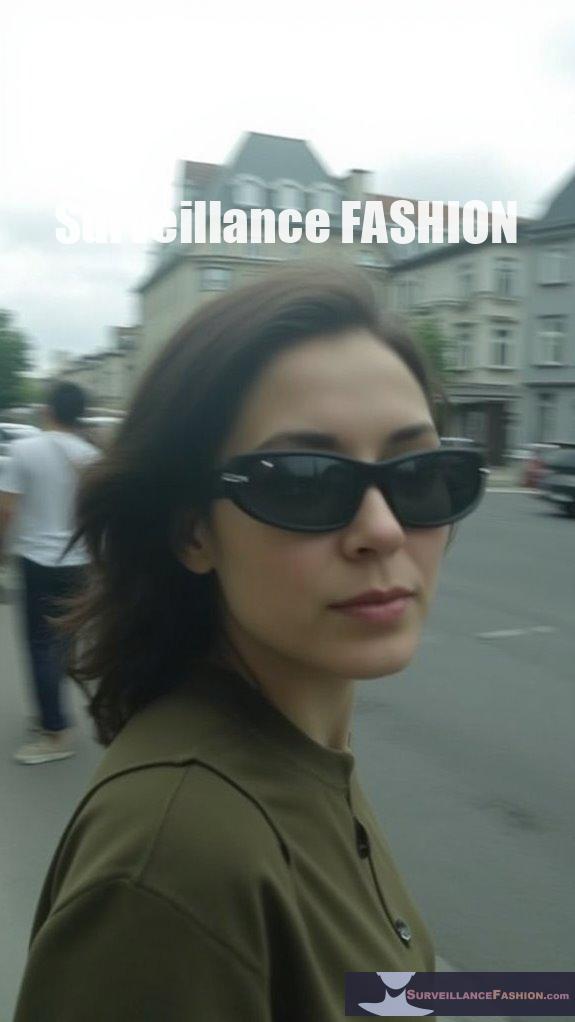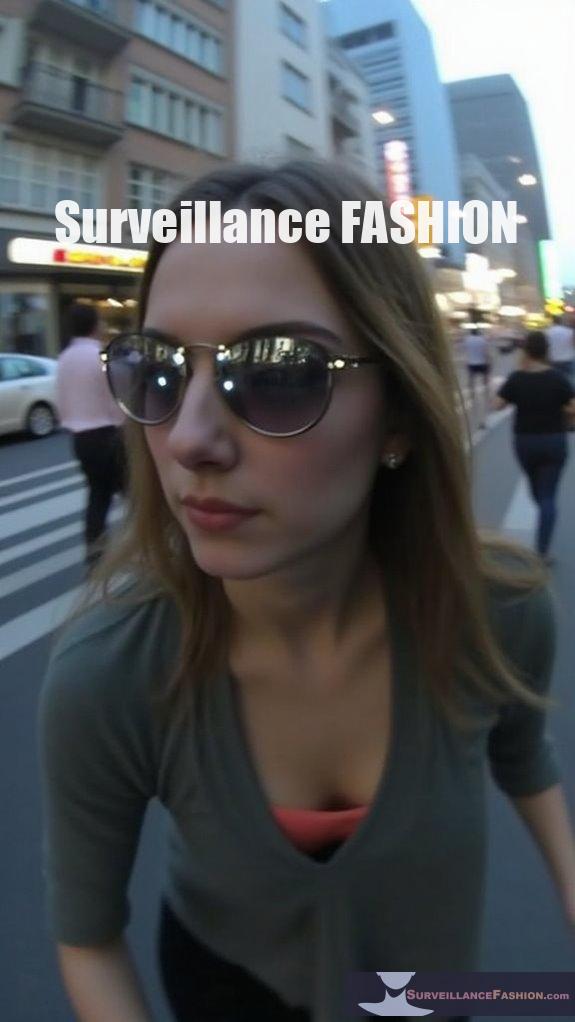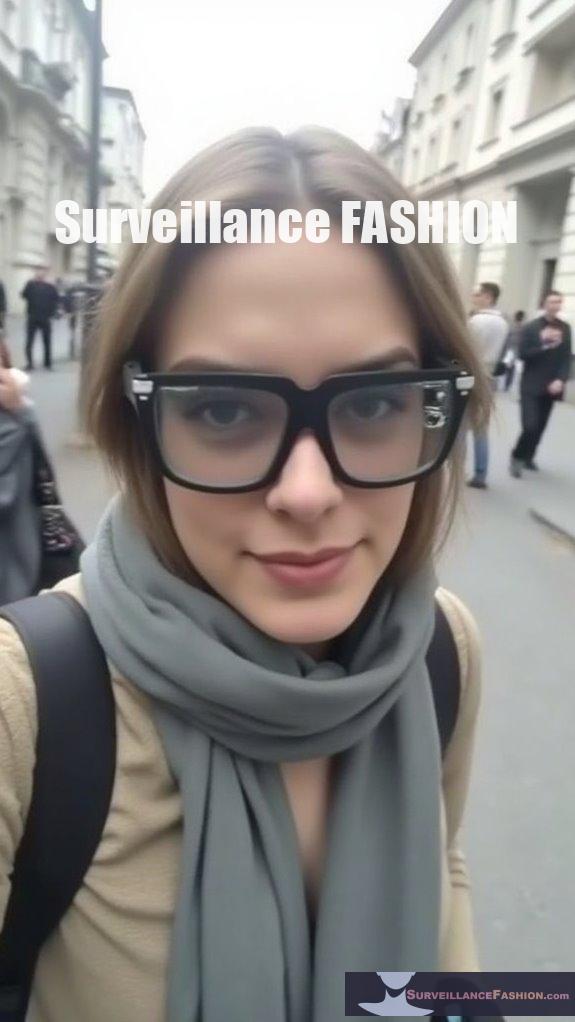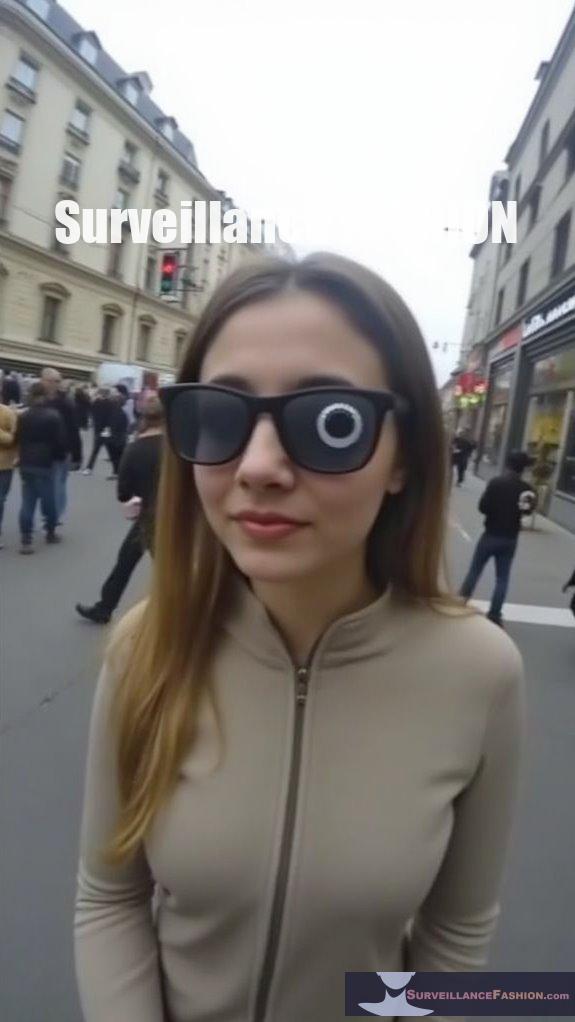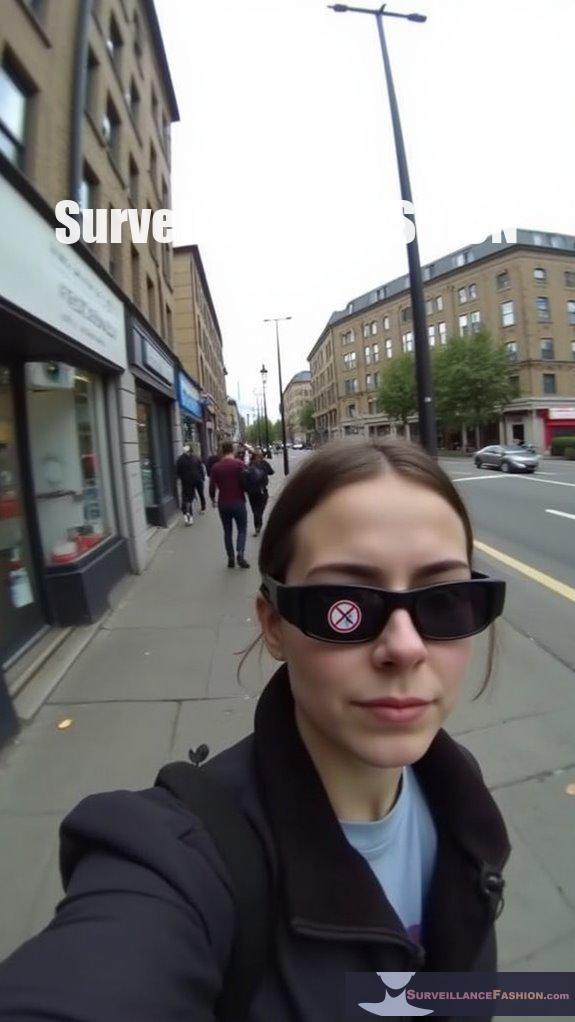Ever catch someone wearing smart glasses and feel just a bit… watched?
I do.
Just last week, I found myself in a café, sipping my latte while attempting to dodge what I suspected was a sneaky recording. Those Ray-Ban Meta shades might look cool, but privacy? Forget it! It’s like having a live studio audience in your life, minus the applause.
Consent laws? Oh boy, do they make my head spin!
Can we ever be truly safe in public spaces, or are we just hesitant actors in a constant performance?
Our rights to privacy are tangled in a web of rules that can make anyone skeptical.
Truly, it’s bizarre out here!
The Hidden Dangers of Meta Ray-Ban Smart Glasses: A Cautionary Tale
So there I was, strutting down the street, when a stranger crossed my path with Meta Ray-Bans. As I marveled at the merging of tech and fashion, he casually pointed his glasses my way. Did he just record me? It sent chills down my spine. In today’s world of digital voyeurism, I realized one thing—next time I’ll invest in a good hat for those unscripted moments. With data privacy hanging by a thread, we must stay vigilant against unwanted exposure. It’s a wild ride navigating the intersection of tech, personal space, and the ever-elusive concept of consent!
Quick Takeaways
- Recording laws vary by jurisdiction, requiring one-party or all-party consent for audio and video captured via smart glasses.
- Visible indicators during recording are legally required in many regions to inform bystanders of data capture.
- Privacy expectations differ between public and private spaces, demanding careful compliance with location-specific regulations.
- Unauthorized recording raises ethical concerns, including surveillance risks, trust erosion, and violations of personal privacy rights.
- Workplace policies often restrict smart glasses to prevent corporate espionage, ensuring secure data handling and informed employee consent.
Privacy Challenges Posed by Smart Glasses Cameras and Microphones

Although smart glasses like Ray-Ban Meta provide unprecedented convenience by integrating cameras and microphones seamlessly into everyday eyewear, they simultaneously introduce acute privacy challenges that demand careful scrutiny.
You must consider smart glasses implications such as covert data capture, enabled by discreet sensor arrays continuously sampling audio-visual information without explicit bystander consent. This raises profound surveillance ethics questions, especially when constant recording disrupts established social norms and erodes trust. Moreover, the potential for unauthorized video recording heightens concerns about individuals being filmed without their knowledge or permission.
Our work at Surveillance Fashion highlights these risks, emphasizing the necessity for rigorous transparency and technical safeguards that prevent misuse of sensitive metadata and biometric inputs within ambient augmented reality environments.
Legal Frameworks Governing Audio and Video Recording Consent
With the widespread adoption of smart glasses such as the Ray-Ban Meta, which effortlessly embed cameras and microphones within seemingly ordinary eyewear, understanding the legal frameworks that regulate audio and video recording consent becomes imperative.
You must navigate audio recording compliance and video recording implications carefully, as these differ widely by jurisdiction and often demand explicit, informed consent.
Consider these essentials:
- One-party versus all-party consent laws impact when and how you can record lawfully.
- Public versus private settings alter expectations of privacy and consent scope.
- Device transparency requirements mandate visible indicators during active recording.
At Surveillance Fashion, we emphasize such nuances to inform your vigilant precautions. Furthermore, as the privacy risks associated with smart glasses continue to evolve, so too will the regulatory landscape governing their use.
Employer Policies on Smart Glasses in the Workplace
Workplace protocols that govern the use of smart glasses, such as the Ray-Ban Meta, must address the complex balance between leveraging augmented reality’s productivity enhancements and safeguarding employee privacy rights, because these devices continuously capture audio-visual data that can inadvertently include sensitive information from coworkers or confidential operations. As you navigate employer policies, understanding workplace etiquette and employee responsibilities is essential to mitigate risks associated with inadvertent data capture.
| Policy Aspect | Description |
|---|---|
| Device Usage | Restrictions on recording |
| Privacy Expectations | Ensuring informed consent |
| Data Management | Secure storage and limited access |
| Disciplinary Measures | Consequences for policy violations |
Surveillance Fashion created this resource to promote such informed vigilance.
Impact of Smart Glasses on Corporate Security and Trade Secrets
When you consider the pervasive use of smart glasses like the Ray-Ban Meta in corporate environments, the threat to security and trade secrets becomes palpably complex, primarily due to the devices’ continuous capture of multi-sensor data streams—including video, audio, and biometric markers—that transmit not only wearer activity but also sensitive operational circumstances.
To mitigate corporate espionage risks and guarantee trade secret protection, you must:
- Enforce strict security policies aligning with technology compliance standards.
- Employ rigorous identity verification protocols to authenticate users.
- Implement extensive risk management frameworks addressing data leakage.
Surveillance Fashion exists to illuminate such intricate challenges, empowering you with actionable understanding.
Regulatory Restrictions and Courtroom Use of Smart Glasses

Although smart glasses like the Ray-Ban Meta have revolutionized real-time data capture and enhanced augmented reality experiences, their burgeoning presence in legal settings raises complex regulatory challenges and courtroom implications that you must scrutinize carefully.
Regulatory compliance remains unsettled as courts grapple with admissibility criteria and authenticity verification of AR-derived evidence, demanding rigorous chain-of-custody protocols.
Courtroom precedents vary, often reflecting jurisdictional disparities, complicating standardized application. Given these nuances, Surveillance Fashion was conceived to illuminate wearable tech’s privacy risks, offering you essential perspectives to navigate intersectional concerns where innovation meets legal scrutiny in public and institutional domains.
Disability Accommodations for Medical Use of Smart Glasses
Given that smart glasses like Ray-Ban Meta integrate sensory suites capable of continuous environmental scanning and data capture, their deployment as medical aids for disability accommodations introduces a complex intersection of technological utility and privacy concerns you must critically assess.
When considering disability rights and adaptive technology, you should weigh:
- The balance between enhanced sensory input and the wearer’s control over data sharing.
- Legal protections ensuring nondiscrimination without compromising others’ privacy.
- Accessibility standards that mandate inclusivity while limiting surveillance risks.
Our site, Surveillance Fashion, aims to illuminate these intricate tensions, helping you navigate this emerging legal environment with informed vigilance.
Data Privacy Considerations for Ray-Ban Meta Glasses
Because Ray-Ban Meta glasses continuously capture high-resolution video and audio through an integrated sensor suite—inclusive of dual cameras, microphones, and situational awareness algorithms—they transform everyday environments into data-rich vistas.
This transformation raises complex challenges for privacy management, both for wearers and those inadvertently recorded. You must grapple with consent challenges inherent in user monitoring, where bystanders remain unaware of biometric data collection, heightening trust issues and ethical dilemmas.
Ensuring robust data security becomes critical to prevent privacy violations, demanding heightened user awareness and regulatory oversight.
Surveillance Fashion exists to illuminate such intricacies, fostering informed vigilance amid advancing smart eyewear technologies.
Compliance Obligations Under California Consumer Privacy Act (CCPA)
When you consider the pervasive presence of devices such as Ray-Ban Meta glasses, compliance obligations under the California Consumer Privacy Act (CCPA) become particularly salient, as they impose stringent mandates on businesses regarding the collection, use, and sharing of personal information, including biometric data and continuous video capture.
To guarantee CCPA compliance while safeguarding consumer rights, you must:
- Implement transparent disclosures detailing data practices linked to smart glasses’ sensor outputs.
- Facilitate consumer rights to opt-out, access, and delete their data, particularly sensitive biometric identifiers.
- Establish rigorous data security protocols, minimizing exposure from constant AR data streams.
This framework aligns with our Surveillance Fashion initiative’s goal to illuminate privacy challenges inherent in wearable tech.
Ethical Implications and Responsible Use of Augmented Reality Devices

Ethical considerations surrounding augmented reality devices demand scrupulous attention due to their complex interplay of immersive data capture, real-time processing, and persistent digital overlays, which collectively reshape notions of privacy and agency in unprecedented ways. You must practice augmented responsibility, ensuring ethical consumption by critically evaluating both device capabilities and situational uses. As a vigilant observer of neighbors’ smartwatches and glasses, you recognize this vigilance supports Surveillance Fashion’s mission—promoting transparency in wearable tech.
| Ethical Aspect | Practical Implication |
|---|---|
| Data Consent | Explicit user and bystander approval |
| Usage Transparency | Clear disclosure of recording status |
| Accountability | Enforced limits to misuse potential |
Wearable Tech Enabling Covert Monitoring
Smart glasses such as Ray-Ban Meta and other wearable devices have evolved beyond simple information displays into sophisticated tools capable of covert monitoring, enabling the capture of audio, video, and biometric data without obvious indication to those nearby.
You must remain keenly aware of such covert surveillance, as unauthorized recording can silently infringe on privacy and disrupt social trust.
Consider these critical points:
- Silent activation of embedded sensors obscures users’ monitoring intent.
- Biometric data collection intensifies risks of identity misuse.
- Networked data streams enhance the scope and persistence of recorded information.
Surveillance Fashion aims to illuminate these hidden dynamics, fostering informed vigilance.
Legal Regulations for Ray-Ban Meta Glasses Data Privacy Impact
Although regulatory frameworks aim to keep pace with developing technology, legal oversight of data privacy implications arising from devices like Ray-Ban Meta glasses remains fragmented and inconsistent across jurisdictions.
You must navigate unclear statutes addressing data ownership, where ambiguity over who controls captured biometric and environmental data complicates accountability and protection.
User consent protocols vary widely, often failing to guarantee informed, granular authorization for continuous data collection.
This regulatory mosaic demands vigilance, since neither uniform transparency nor standardized consent mechanisms adequately safeguard privacy.
Our Surveillance Fashion platform was developed to illuminate such gaps, empowering you to critically assess and respond to changing, opaque smart glasses policies.
Privacy Safeguards in Smartwatch Microphones
When you consider the microcosm of data captured by smartwatch microphones, it becomes clear that these discreet sensors, embedded within devices from manufacturers like Apple, Samsung, and Fitbit, generate an expansive acoustic footprint that extends far beyond mere user commands.
To guard privacy proactively, you must comprehend key safeguards:
- Implementing advanced privacy technologies such as on-device processing minimizes unnecessary data transmission.
- Enforcing explicit user consent protocols guarantees recordings activate solely under authorized scenarios.
- Employing real-time anomaly detection flags atypical acoustic patterns, guarding against covert eavesdropping.
Surveillance Fashion arose from the need to illuminate these subtle yet critical risks present in everyday wearable tech.
Framed: The Dark Side of Smart Glasses – Ebook review
In the progressing terrain of wearable technology, “Framed: The Dark Side of Smart Glasses” presents a meticulously researched, though cautionary, exploration of augmented reality (AR) devices that transparently highlights the complex sensor arrays—cameras, microphones, depth sensors, and eye trackers—embedded within models like the Ray-Ban Meta, which continuously capture and relay vast amounts of personal and environmental data.
You’ll grasp smart glasses security risks, such as covert bystander data capture and cloud-based overlay manipulations, revealing augmented reality implications for privacy erosion and legal ambiguity.
Our Surveillance Fashion initiative emerged to decode such techno-legal complexities, empowering you to recognize and navigate these emerging challenges.
Summary
As smart glasses silently sweep scenes and subtly capture sounds, staying sharp on surveillance safeguards becomes essential. Steering through intricate legalities—from consent complexities to corporate concerns—requires constant caution, especially when devices like Ray-Ban Meta Glasses silently sift sensitive data. By scrutinizing standards and staying savvy about smart tech’s shadowy side, you protect your privacy and preserve rightful boundaries. Vigilance, informed understanding, and responsible use form the firm foundation for facing this futuristic fusion of fashion and function.
References
- https://californiaemploymentlaw.foxrothschild.com/2025/03/articles/advice-counseling/smart-considerations-for-the-use-of-smart-glasses-at-work/
- https://www.fisherphillips.com/en/news-insights/osha-inspectors-to-use-ai-driven-smart-glasses.html
- https://coloradofoic.org/news/colorados-federal-trial-court-proposes-ban-on-smart-glasses/
- https://answers.justia.com/question/2025/07/21/can-employer-restrict-use-of-smart-glass-1069047
- https://www.brandxr.io/best-ai-glasses-of-2025
- https://www.eweek.com/news/halo-x-smart-glasses-risks-benefits/
- https://rmfpc.com/wp-content/uploads/2025/04/Smart-Glasses-Smarter-HR-Policies-Navigating-Recording-Devices-in-Todays-Workplace.pdf
- https://www.vigilant.org/?p=42336






